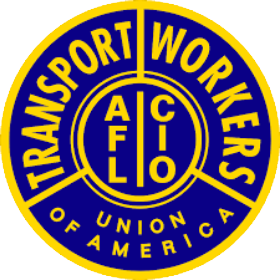June 26, 2014
By Steven Wishnia
New York — If people facing retirement in poverty is a looming crisis, what can be done to help? There are several ideas being mooted by people in the labor and policy worlds, with the basic principles of covering workers who don’t have retirement plans and taking risk off individuals.
The catch, however, is that “genuine retirement security is expensive,” as AFL-CIO national policy director Damon Silvers told a conference at the New School June 16. New York State Comptroller Thomas DiNapoli estimates the nation would need $7 to $14 trillion to ensure an adequate retirement for everyone.
One category of ideas consists of improved ways for people to save money for retirement, methods that would not have the high fees and low returns of 401(k) plans. Several states are studying such plans, says John Adler, head of the SEIU’s retirement security campaign. California is conducting a feasibility study on a plan called “Secure Choice” that would require every business that has five or more employees and doesn’t offer its own retirement plan to enroll workers in a system where their contributions are pooled and invested by a trust.
If half of the more than 6 million California workers who don’t have a retirement plan contributed $500 a year, Adler calculates, that would create a $1.5 billion fund. Unlike individual 401(k) or voluntary plans, he says, that would be big enough to be much cheaper and yield better returns.
The New School’s Teresa Ghilarducci has proposed a similar system of “Guaranteed Retirement Accounts” in which workers would have accounts in a fund, administered by a private investment firm under state contract. This, says economist Joelle Saad-Lester, could offer a guaranteed return and be less subject to “the gyrations of the market.”
Public Advocate Letitia James is calling for the city to create a centrally pooled retirement fund for private-sector workers, as well as preserving public employees’ current pensions. “We want a fund that lowers the costs and has better returns than a traditional 401(k),” says press secretary Brendan Brosh. Ideally, he adds, this plan would offer a monthly benefit, but requiring employer contributions would be politically difficult and a hardship for some small businesses.
“We’re just trying to start the dialogue,” says Brosh. “The federal government is not leading.”
All these plans, however, are essentially better ways for individuals to save. Most people don’t earn enough to put aside the money needed to finance a decent retirement, says Steven Kreisberg, AFSCME’s director of research and collective bargaining. The growing number of temporary, freelance and “independent contractor” workers generally have incomes too precarious to save, and it would be extremely difficult to get their employers to contribute to their retirement. And individual savings plans are vulnerable to “leakage”—when people dip into their retirement funds to pay medical bills, send a child to college, or survive while unemployed.
Thus, some have proposed having states set up their own Social Security systems to augment the federal one. These “really would provide an additional defined benefit,” says Adler. The Canadian province of Ontario has such a system, and its 4% payroll tax yields a $7,500 a year benefit, says Kreisberg.
The American Social Security system is “really underpowered,” says Silvers. It replaces only about 30% of people’s incomes from work, while several European nations’ equivalents replace 60%. But Social Security is “designed better than anything we’ve got,” he contends: Employers are required to contribute; it’s mandatory, so it has enough money coming in to cover everyone; it provides a monthly annuity; investments are pooled and professionally managed; it’s portable, so workers can collect after having had different jobs; and there’s no leakage.
Obviously, getting such an increase enacted would politically difficult in a Washington where discussion is dominated by the idea of “reforming entitlements,” such as by the “chained CPI,” lowering Social Security cost-of-living increases. To inspire people to counter that, says Barbara Bowen of the Professional Staff Congress/CUNY, the labor movement has to “think big on pensions,” as it once did in the fight for an eight-hour day. “People will fight for a big idea.” The left wing of the Democrats in Washington got more traction talking about expanding Social Security than the Obama administration did in six years of pushing for improved individual retirement accounts, said Silvers.
“We need to know what we’re up against,” New York City Central Labor Council President Vincent Alvarez told the New School forum. “We need to focus on defending collective bargaining and Social Security.”



